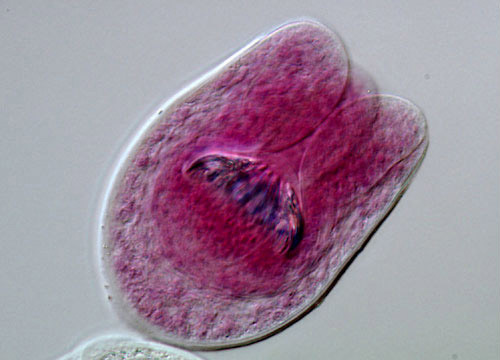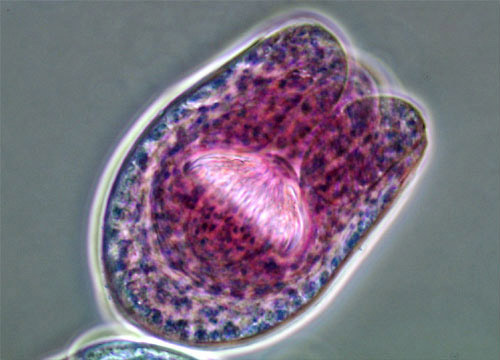Tapeworm Echinococcus granulosus Hydatid Cyst
Echinococcus granulosus is a tapeworm parasite that in its larval form can cause hydatid disease, which is characterized by cysts forming within the victim's body. In order to complete its lifecycle, the tapeworm must infect two hosts, a carnivore and a herbivore.
 DIC
DIC
 Phase
Phase
Phase
The adult form of Echinococcus granulosus exists benignly in carnivores, which are primarily infected by eating the raw or undercooked internal organs of other animals that contain hydatid cysts. The tapeworm larvae that fill the cyst are released into the animal's body after the cyst wall is digested. The larvae attach themselves to the intestines, where they grow into egg-producing adults. When the eggs are passed outside the body with excretory material, they may then by digested by grazing animals. The eggs hatch within the herbivorous host and travel throughout the body, settling into tissue and developing into cysts.
DIC
Hydatid disease is most frequently associated with sheep herding, but humans should wear gloves when handling scat, and avoid allowing their pets to lick them on the mouth, in order to decrease the possibility of becoming infected by a tapeworm-infested dog or cat. Yet, even if the parasite does find a way into a human host, infection does not always lead to serious health effects. Cysts may exist in humans for many years before symptoms become apparent and, occasionally, there are never any signs of illness. The cysts can become extremely problematic, however, if they grow to large sizes, develop on the brain, or rupture.















